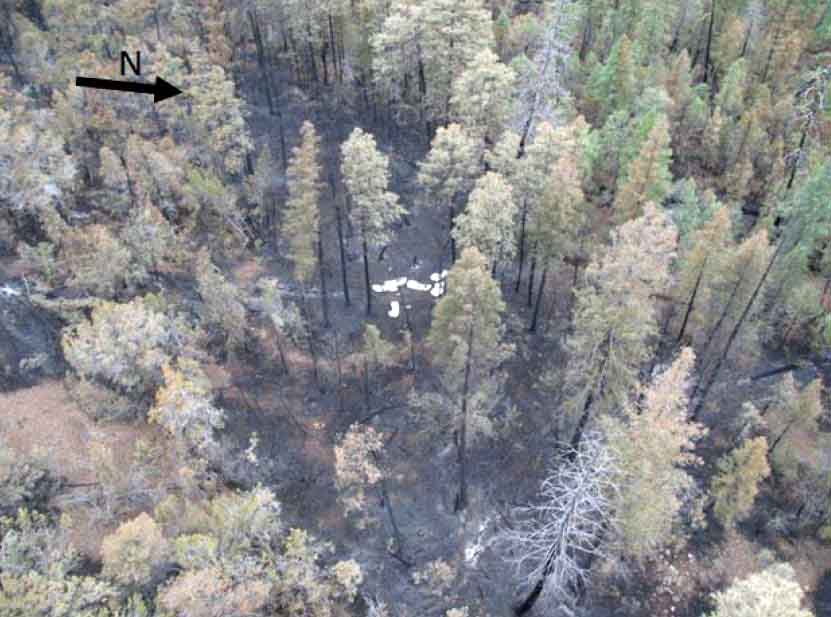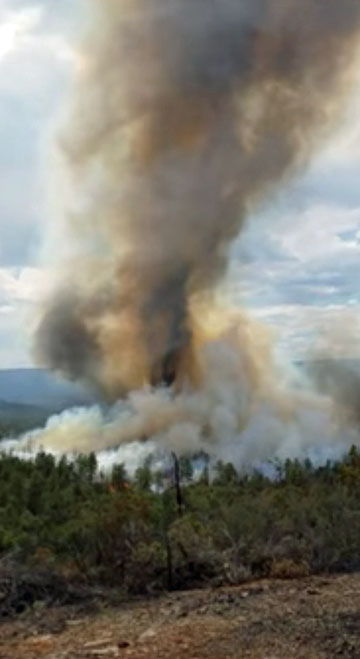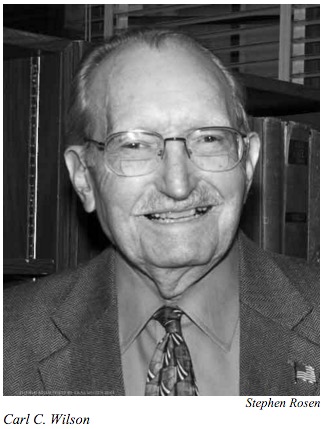Five years ago after 19 firefighters were killed while fighting the Yarnell Hill Fire in Arizona on June 30, 2013 the U.S. Forest Service said they were going to move up the planned revision of the fire shelters that failed to be effective when used by the Granite Mountain Hotshots that day. The redesign has now progressed to the point where it will be tested by 60 firefighters this year.
Below is information released by the National Interagency Fire Center about the project.
This summer, a total of 60 wildland firefighters will carry one of four new fire shelter prototypes for “wear testing” as part of the ongoing “Fire Shelter Project Review” that was initiated in 2014 to identify possible improvements to the fire shelter system.
The National Wildfire Coordinating Group (NWCG) Fire Shelter Subcommittee, which is comprised of federal, state, and local wildland firefighters, wildfire safety specialists, fire management officers, and other fire shelter users, selected the four new fire shelter prototypes for wear testing. The USDA Forest Service National Technology and Development Program, which administers the Fire Shelter Project Review, will issue a total of 60 prototypes of four different new fire shelter designs that have shown improved performance in lab tests to wildland firefighters to evaluate durability. The wildfire environment is very rugged and fire shelters must be carried by wildland firefighters for years and still be functional when needed.
Two of the new fire shelter prototypes are designed for ground firefighters and 20 of each of these prototypes will be issued to Interagency Hotshot Crew members for wear testing. The other two new fire shelter prototypes, which have been determined to be too bulky for ground firefighters, will be tested by equipment operators. Ten of each of the bulkier prototypes will be issued. The National Aeronautics and Space Administration (NASA) and the USDA Forest Service have a cooperative work agreement for this project. Two of the prototype fire shelters are NASA designs.
“The biggest job that a fire shelter has to do is be carried around by a wildland firefighter all day, every day, all season long,” said Tony Petrilli, Fire Shelter Review Leader with the USDA Forest Service National Technology and Development Program. “That doesn’t lend itself to the use of a lot of materials that can withstand high temperatures because of weight, bulk, durability and toxicity.”
The current fire shelter, which has been in use nationwide by all wildland firefighters since 2010, offers 54 seconds of survivability in lab tests. The current and previous versions of fire shelters have saved the lives of hundreds of wildland firefighters since the 1960s. The four new fire shelter prototypes that will be wear tested this summer offer increased protection, but two of the four are also bulkier and heavier. The backpacks that wildland firefighters carry weigh an average of 45 pounds. Adding weight and bulk to the fire shelter increases daily physiological stress on wildland firefighters. A 2014 survey of over 3,800 wildland firefighters indicated that they prefer a lighter fire shelter that matches the performance of the current fire shelter over a more protective fire shelter with additional weight and bulk.
Over the last four years, the USDA Forest Service National Technology and Development Program evaluated and tested hundreds of potential fire shelter materials and designs submitted by 23 different organizations from all over the world. The materials and designs were evaluated on weight, bulk, durability and toxicity, which are critical to determine suitability for use in fire shelters. Suitable materials were tested in a small-scale flame test to determine material strength, durability, flammability, and thermal performance. Materials that showed promise in the small-scale test were then constructed into fire shelters and tested in a full-scale, direct flame test to measure the performance of the overall fire shelter design.
After completion of the wear tests, the USDA Forest Service National Technology and Development Program will evaluate the results and conduct a final round of full-scale direct flame testing to ensure the four new fire shelter prototypes are still able to perform after being carried by ground firefighters and equipment operators over the summer. The final results will be presented to the NWCG Fire Shelter Subcommittee which will make a recommendation on whether to adopt one or more of the new fire shelter prototypes or to continue to use the existing fire shelter.
Wildland firefighters are trained to consider fire shelters as a last resort and to avoid situations that can lead to entrapment. As with the current fire shelter, it is likely that none of the four new fire shelter prototypes can ensure survival in all wildfire conditions. Nationwide, in 2017, wildland firefighters deployed fire shelters on two separate incidents when they were caught in fire entrapment situations, all three wildland firefighters survived.









